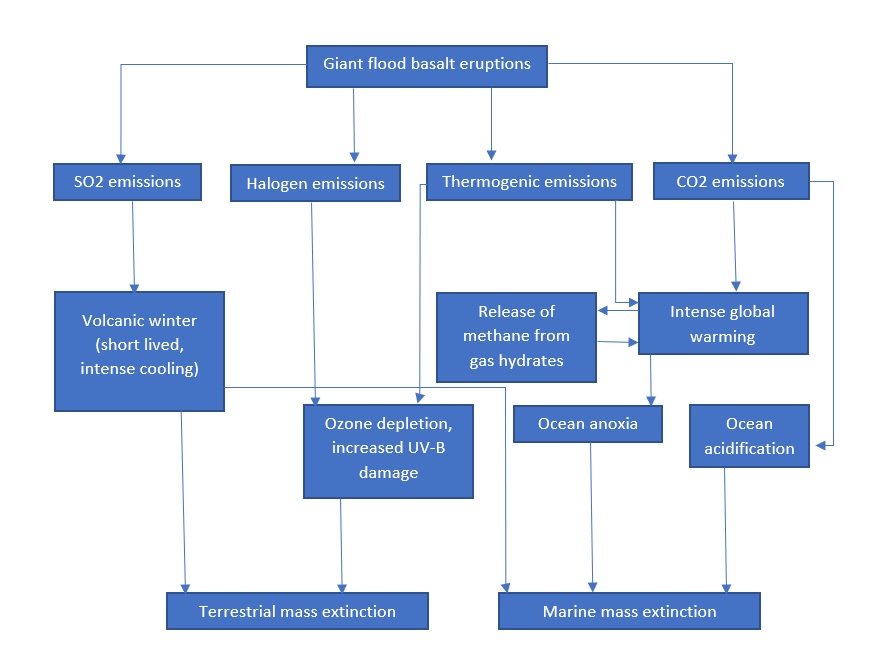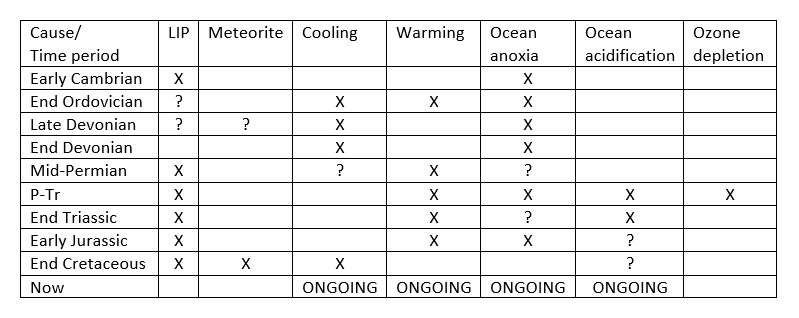Author: Manu Steens
In this piece I write my own opinion, not that of any organization.
I recently read a very small book: “Extinction – A Very Short Introduction” by Paul B. Wignall. (Oxford University Press) In it he talks about the various extinction waves that have happened over millions of years. In doing so, he indicates the probable causes.
Probable causes
He gives an overview of the possible probable causes and their course as follows (he starts from the geologic workings of the Earth):

Mechanisms for all mass extinctions
The author gives a comparison of the proposed mechanisms for all mass extinctions in a table as follows (LIP = ‘Large Igneous Provinces’ = extensive areas of ‘flood basalt flows’):

At the end of the table, I took the liberty of adding the current situation. Whether this suggestion to an interpretation is the right one is almost certain. What I don’t think works is putting money into a fund for ‘the end of the world’. As António Manuel de Oliveira Guterres recently said on the occasion of the climate summit in Egypt: “Our Earth is in the ‘Emergency room'”. In my opinion, largely reconfirming the decisions of the previous climate summit is insufficient. One put the frog in a pot of fresh water and can now boil to death, is my interpretation. Earlier CO2 explosions happened over millions of years, now in a hundred years.
Conclusion
What is one of the biggest dangers? I believe that it is this increase in CO2. It is not the case that if the CO2 concentration stagnates, global warming will do the same. The relationship between the two is not that of an on-off controller. When CO2 emissions on earth end tomorrow, the warming-up will not stop immediately, but will shoot through to a maximum, and then return to a lower temperature. Only after a number of temperature fluctuations, nature will find a new balance. This is called a transitional phenomenon. It is therefore questionable to set 1.5 °C as a criterion. Especially if that criterion is repeated when the increase is already in full swing. Hence linear models and decisions are out of the question.
